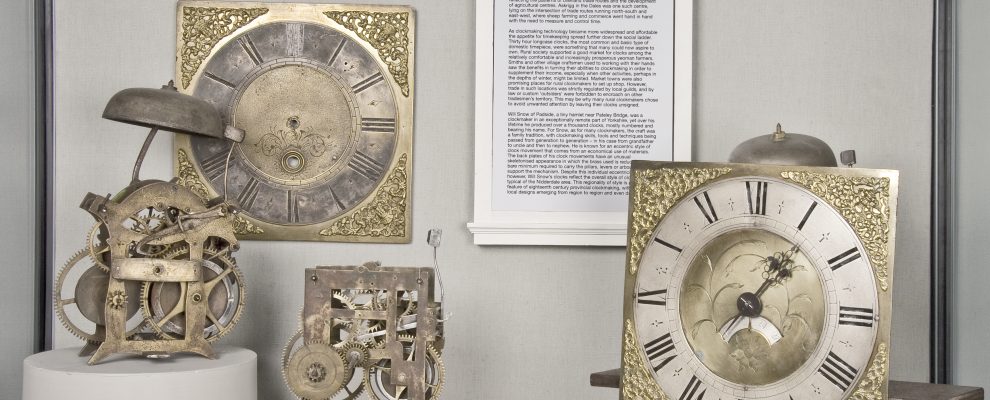Clock production in the eighteenth century was an activity which was naturally centred in towns and cities, where the desire for timekeeping was driven by industrial, commercial, social and consumer demand. Yet clockmaking was not exclusively an urban trade. In the far reaches of Yorkshire, clockmakers could be found at work in some of the smallest and remotest of villages, their locations reflecting the patterns of overland trade routes and the development of agricultural centres. Askrigg in the Dales was one such centre, lying on the intersection of trade routes running north-south and east-west, where sheep farming and trade went hand in hand with the need to measure and control time.
As clockmaking technology became more widespread and affordable the appetite for timekeeping spread further down the social ladder. Thirty hour longcase clocks, the most common and basic type of domestic timepiece, were something that many could now aspire to own. Rural society supported a good market for clocks among the relatively comfortable and increasingly prosperous yeoman farmers. Smiths and other village craftsmen used to working with their hands saw the benefits in turning their abilities to clockmaking to supplement their income, especially when other activities, perhaps in the depths of winter, might be limited. Market towns were also promising places for rural clockmakers to set up shop, although trade in such locations was strictly regulated by local guilds and by law or custom ‘outsiders’ were forbidden to encroach on other tradesmen’s territory. This may be why many rural clockmakers chose to avoid unwanted attention by leaving their clocks unsigned.
Will Snow of Padside, a tiny hamlet near Pateley Bridge, was a clockmaker in an exceptionally remote part of Yorkshire, yet over his lifetime he produced over a thousand clocks, mostly numbered and bearing his name. For Snow, as for many clockmakers, the craft was a family tradition, with clockmaking skills, tools and techniques being passed from generation to generation – in his case from grandfather to uncle and then to nephew. He is known for an eccentric style of clock movement that comes from an economical use of materials. The back plates of his clock movements have an unusual skeletonised appearance in which the brass used is reduced to the bare minimum required to carry the pillars, levers or arbours that supported the mechanism. Despite this individual eccentricity in design, however, Will Snow’s clocks reflect the overall style of clockmaking typical of the Nidderdale area. This regionality of style is a strong feature of eighteenth century provincial clockmaking, with distinct local designs emerging from region to region and even dale to dale.
(From Keeping Time a temporary exhibition at Fairfax House, 5th October-31st December 2012)

Name: Hannah Phillip
Title: Director
Source: Keeping Time (Fairfax House, 2013)
